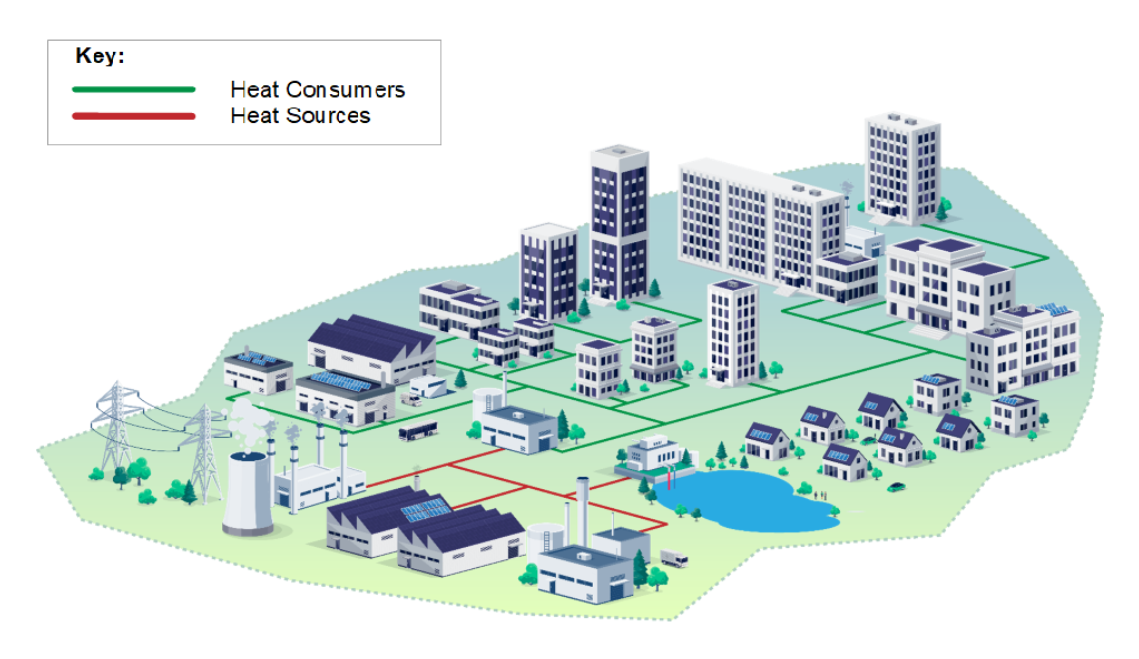This is a guide on enabling the accelerated roll-out of heat networks to provide a secure supply of
low-cost, low-carbon heat to consumers in England.
This is a guide on enabling the accelerated roll-out of heat networks to provide a secure supply of low-cost, low-carbon heat to consumers in England.
What Is a Heat Network?
Heat networks use insulated underground pipes to distribute heat from centralised sources to a variety of different customers, such as public buildings, shops, offices, hospitals, universities, and homes.
These highly efficient systems remove the need for individual boilers or heaters in each building, and they can utilise local sources of low-carbon heat.
They are one of the most cost-effective ways of providing reliable and affordable heat to consumers, and they will help us to end our reliance on fossil fuels while cutting customer bills.
 Heat Network Zoning
Heat Network Zoning
Heat network zoning will fundamentally transform the development of new heat networks in towns and cities across England.
Through heat network zoning, certain types of buildings and low-carbon heat sources can be required to connect to a network within a prescribed timeframe. By identifying and connecting the largest consumers of heat within a given area, a critical mass can be reached and provide the certainty needed to support long-term investment in heat networks.
Why We Are Delivering Heat Network Zoning
By identifying areas where heat networks are expected to be the lowest-cost, low-carbon heating option, buildings within the zones will benefit from a national framework that has assessed their best options to decarbonise their heating.
Furthermore, heat networks provide flexibility and security of heat supply as they can deliver heat provided from a variety of different sources.
The Process
A new Heat Network Zoning Authority, based within central government, will oversee the implementation of heat network zoning and set national standards. Local zoning co-ordinators will also be established with responsibility for designating areas as heat network zones and enforcing requirements within them.
End of Preview
